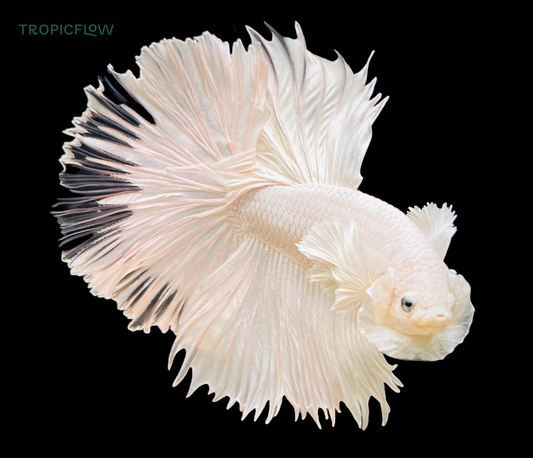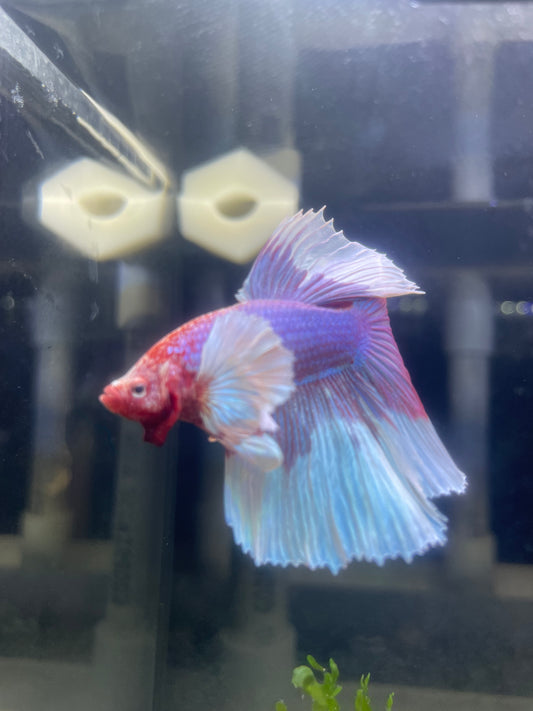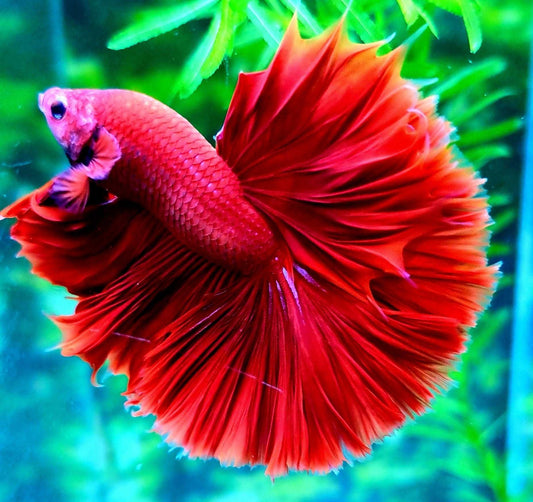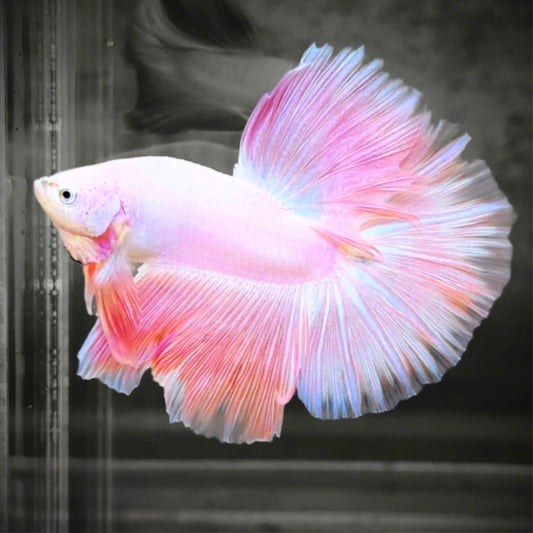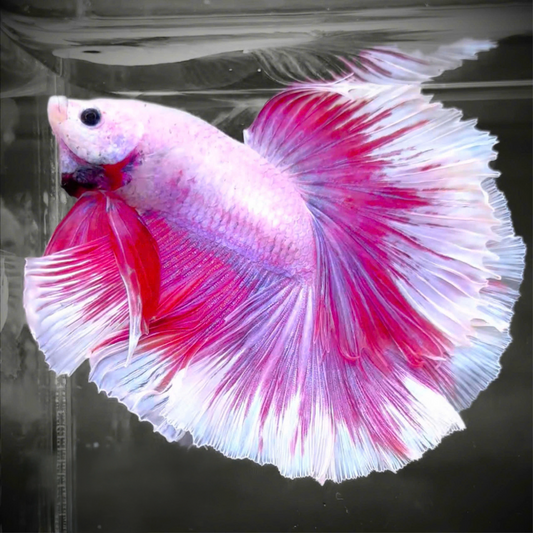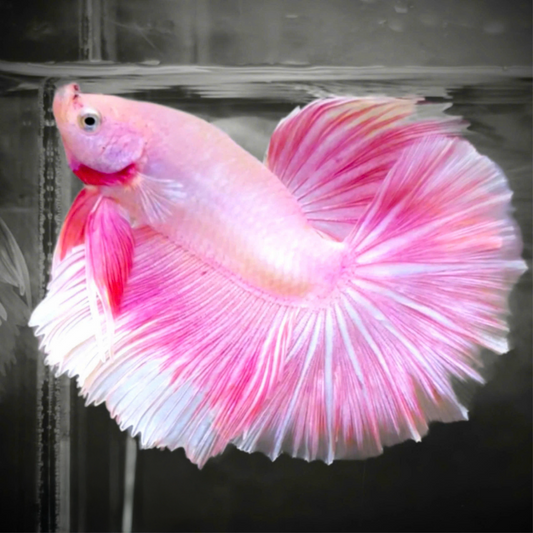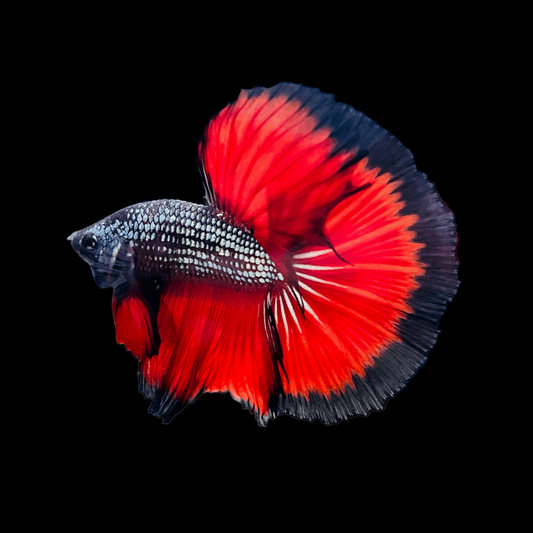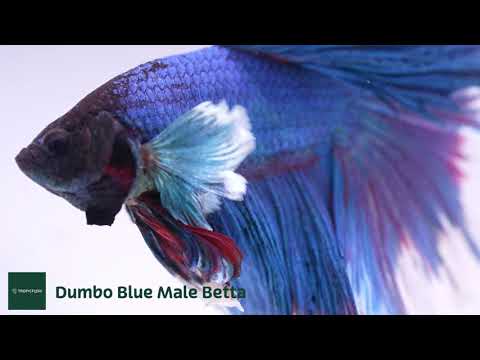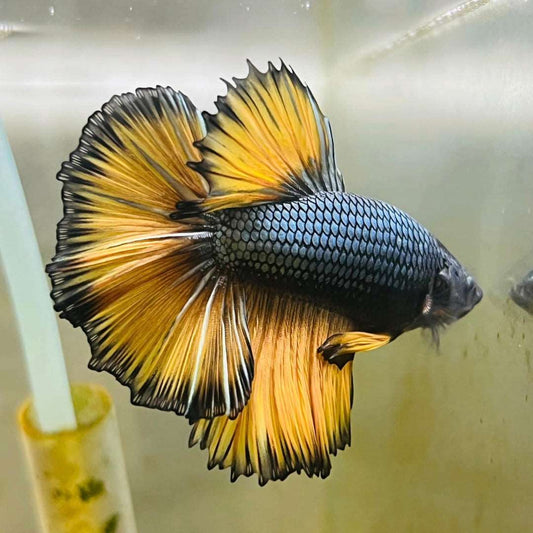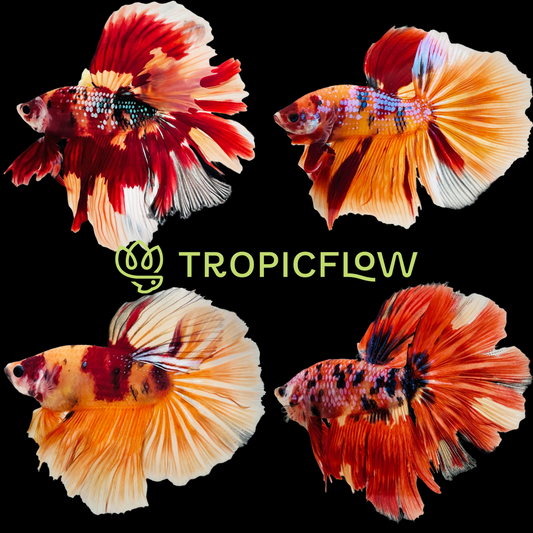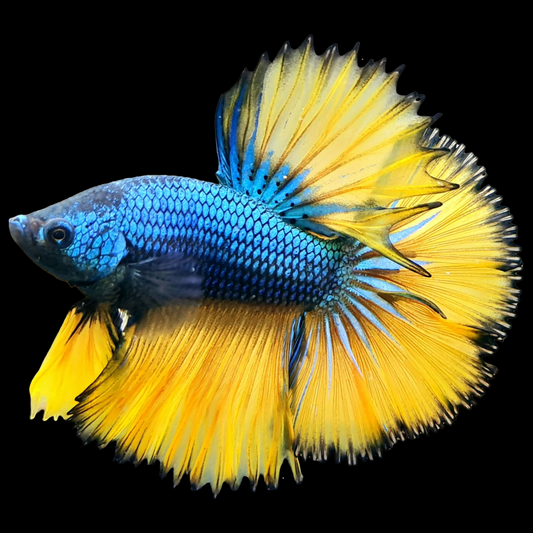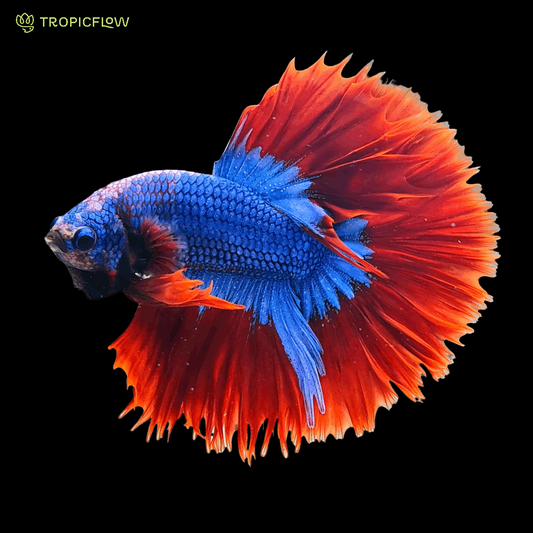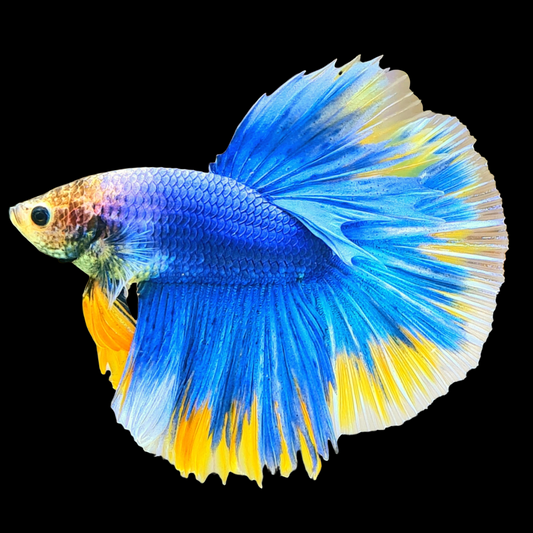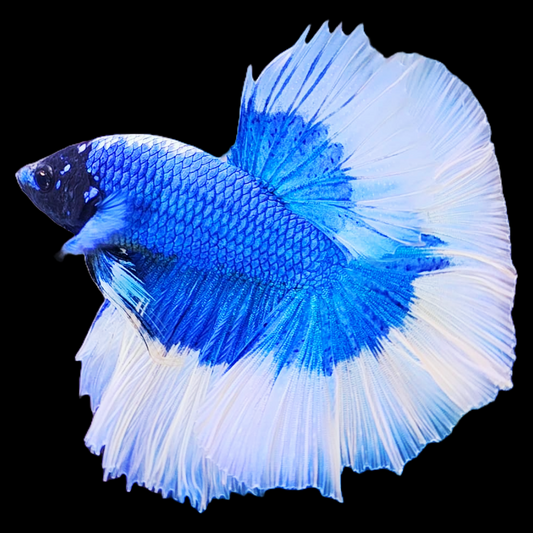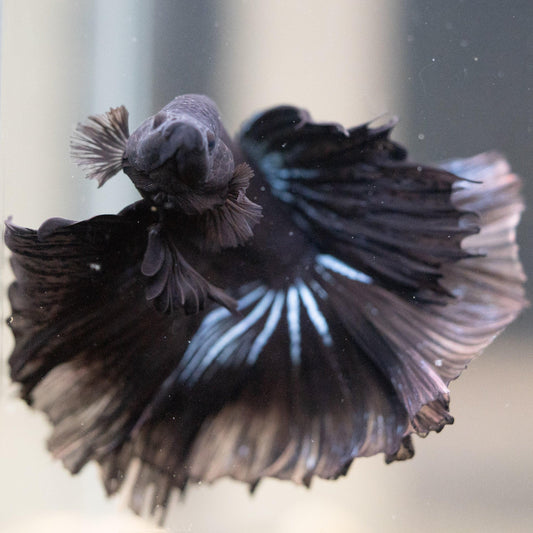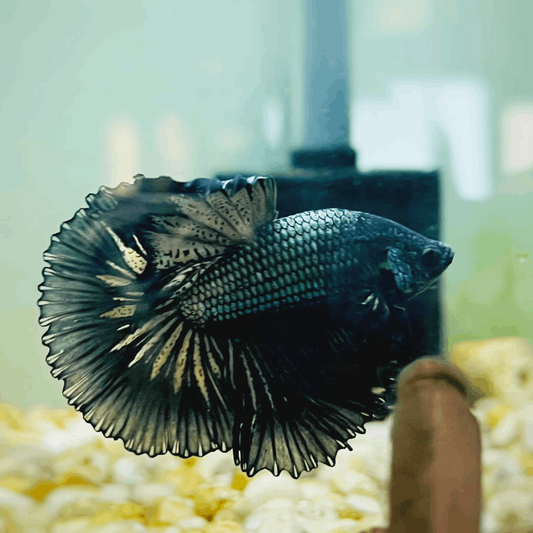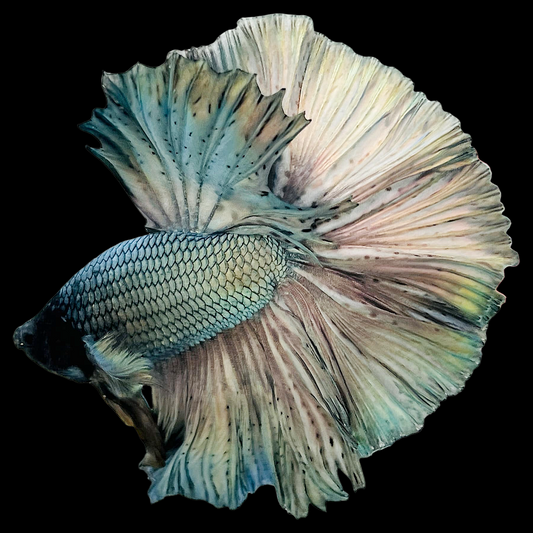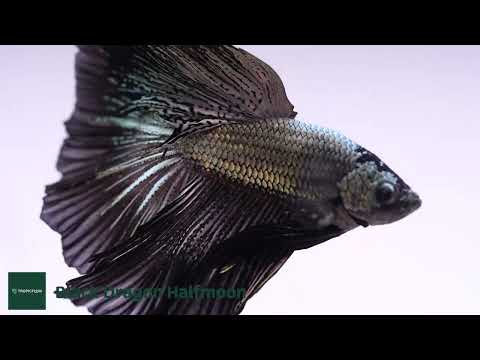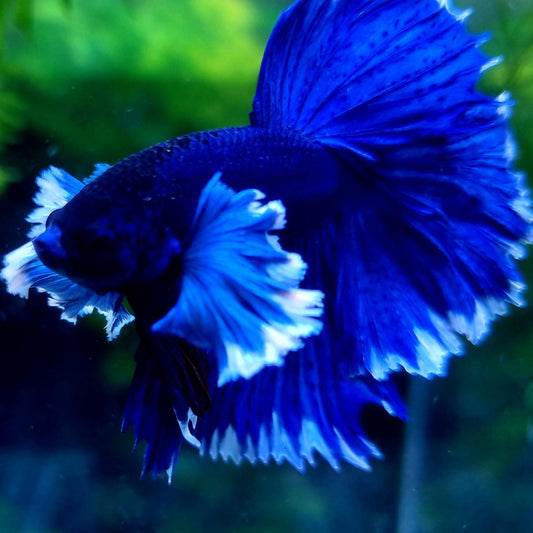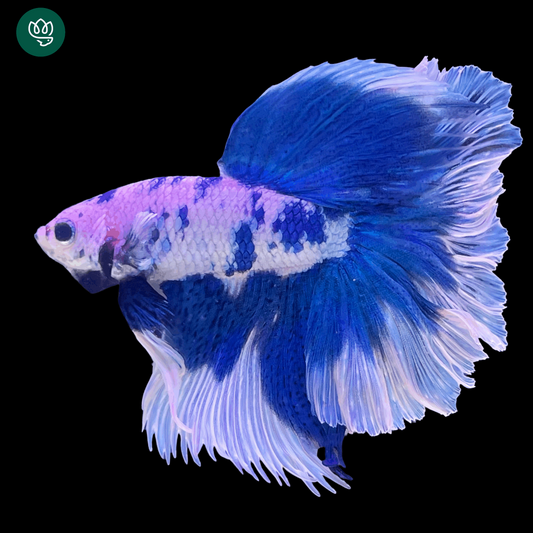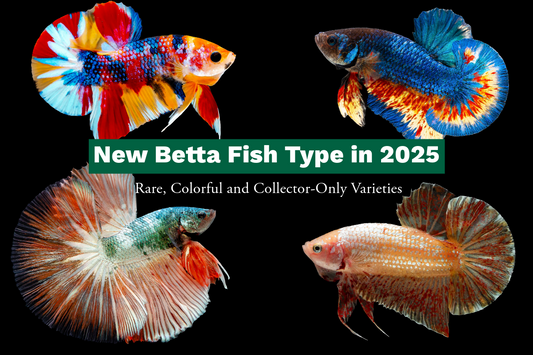The Magic of the Halfmoon Tail
Halfmoon Bettas are like the supermodels, superstar of the Betta fish world, thanks to their unique, fan-shaped tails that spread a full 180 degrees, much like a semi-circle or, well, a half-moon. The first time I saw one, I was absolutely mesmerized. It's not just their tails but these fish come in a rainbow of colors and patterns that can leave you staring at your tank for hours.
A Brief Dip into History
These beauties didn't just appear out of the blue. It took many years of dedicated breeding and a bit of genetics magic generation over generation to create the Halfmoon Betta. Originating from the wild Bettas of Southeast Asia, selective breeding has amplified their beauty, turning them into the aquatic masterpieces we see today.
How Many Types of Halfmoon Betta Fish Nowadays
Halfmoon betta fish come with so many different types, from mainstream (the most popular) to underground (super rare and exotic). Nowadays, halfmoon betta fish exist from Solid Color Halfmoon, Dumbo Halfmoon, Dragon Halfmoon,...and many more out there.
Setting Up Their Home Sweet Home
Tank Talk
First off, tank size does matter here. While Bettas are known for their hardiness, a tiny bowl won't cut it. A 10-gallon tank is the minimum I'd recommend for one Betta to thrive, but more space is always better. This gives them enough room to flaunt those gorgeous fins and stay active, and space for real aquatic plants also.
Water Works
Halfmoon Bettas prefer their water warm, around 78-80°F, with a neutral pH. Regular water changes and a gentle filter will keep their environment clean and their fins healthy. And remember, Halfmoon betta fish, like other betta fish, they do love black water (tannin water) which makes them calm, and prevent disease. I've learned the hard way that strong currents can damage their delicate tails, so a filter with adjustable flow is a must. Doing water changes 10-20% per week is ideal for betta fish tanks.
The Perfect Menu
A balanced diet for these guys includes high-quality Betta pellets, frozen or live foods like brine shrimp or bloodworms. Variety is key! Remember, overfeeding is a common pitfall—once or twice a day in small amounts is plenty.
Watch Out for Trouble
Keep an eye out for signs of stress or disease, like faded colors or clamped fins. Clean water and a proper diet go a long way in prevention, but sometimes, despite our best efforts, illness can strike. Early intervention is critical, so having a basic Betta first aid kit and doing some research on common ailments can save you a lot of heartaches.
The Art of Breeding
Breeding Halfmoon Bettas can be both a challenging and incredibly rewarding experience. Here's a nugget of wisdom: it's not for the faint of heart. It requires patience, preparation, and a lot of love.
The Breeding Dance
Selecting the right pair is just the start. The courtship ritual of Bettas is a beautiful, albeit aggressive, dance. Providing a breeding tank with the right conditions and carefully introducing the pair is crucial. After spawning, the male takes over, meticulously caring for the eggs in his bubble nest. Watching new life emerge and grow has been one of the most rewarding experiences of my life.


































